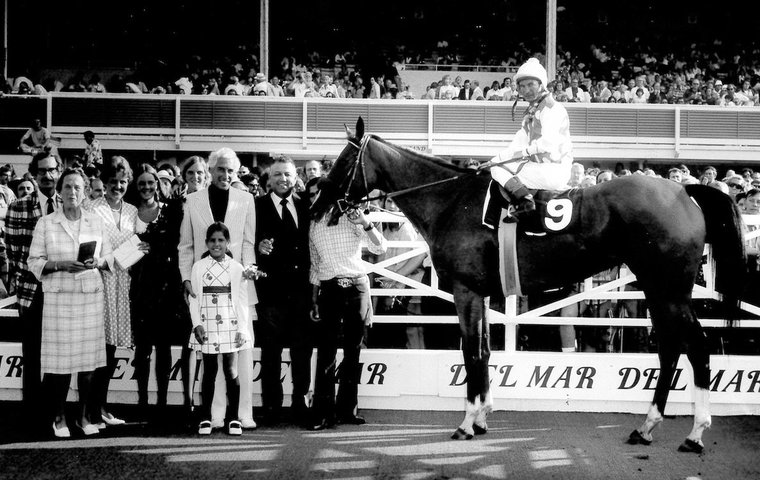
In the latest of his unmissable series, Jay Hovdey recalls the long and distinguished career of the versatile ex-Chilean performer – as elegant as they come – who locked horns with the best in the mid-seventies
Indulge the writer for a moment. I am going to describe a Thoroughbred racehorse, a mare to be more precise, bred in the pencil-thin nation of Chile and exported to the United States for top-flight competition by her Chilean owners, men of obvious ambition.
Over her four North American seasons, the mare races 54 times. She wins a dozen stakes, all of them graded or about to be, and finishes second or third in 18 others. She wins races on the dirt from seven furlongs to a mile and a quarter, in New York and California. She wins races on the grass from 6½ furlongs to a mile and one-eighth, while carrying as much as 132 pounds.
Sounds prehistoric, right? There’s more.
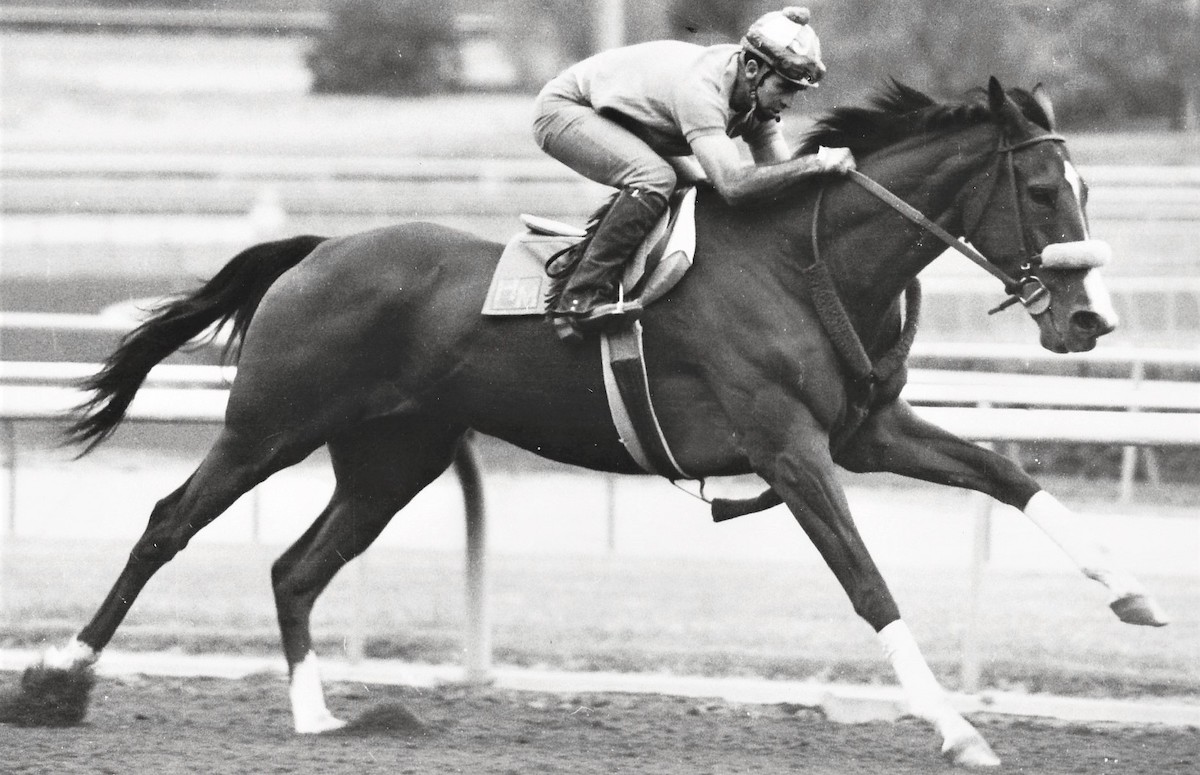 During one particularly memorable nine-month stretch, she goes head-to-head with a two-time champion and future Hall of Famer, beating her in five out of eight encounters. She is also a Stubbs painting come to life: a tall, elegant, coppery bay with four white stockings, a forthright blaze, and a coal-black mane. And whenever she runs, cutting it close or winning for fun, she twirls and swishes her long black tail as if in playful celebration of the chase.
During one particularly memorable nine-month stretch, she goes head-to-head with a two-time champion and future Hall of Famer, beating her in five out of eight encounters. She is also a Stubbs painting come to life: a tall, elegant, coppery bay with four white stockings, a forthright blaze, and a coal-black mane. And whenever she runs, cutting it close or winning for fun, she twirls and swishes her long black tail as if in playful celebration of the chase.
A classic conundrum
Tizna, the mare in question, presented this writer with a classic conundrum. I came to the game already in thrall to the romance of Susan’s Girl, who was the most durable star of the great female era of the early 1970s that also included Desert Vixen, Typecast, Turkish Trousers, Convenience, Summer Guest, Twixt, and Numbered Account.
Susan’s Girl offered everything a racing fan could ever desire. Champion at three and four and no less effective at five, she arrived at her six-year-old season in the winter of 1975 stabled at Santa Anita and promising more of the same. I was president of any fan club bearing her name.
But then there was that day in 1974, a season during which Tizna would win important races for the division at both Santa Anita and Del Mar, that Henry Moreno, her mischievous trainer, invited me into her stall. “Don’t worry,” Moreno said, amused at my wary approach. “She won’t bite.”
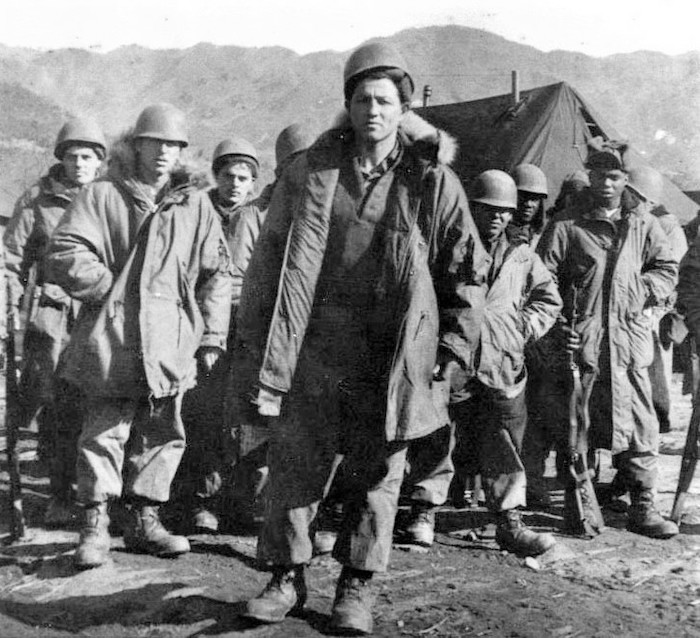 This was funny, but only in retrospect and painfully so, when another of Henry’s horses mistook me for a hayrack that summer and left a baseball-sized bruise on my upper arm.
This was funny, but only in retrospect and painfully so, when another of Henry’s horses mistook me for a hayrack that summer and left a baseball-sized bruise on my upper arm.
Anyway, Tizna tolerated my presence long enough for me to experience both awe and “aah”. Henceforth she became the ‘other’ female in my racing life, which meant that I spent the 1975 season torn between the two best mares in training.
Moreno was a Southern California cowboy who cut his teeth on rough ranch life and the world of Quarter Horse racing. He spent his military service hip deep in the Korean conflict in the early 1950s, where he led a platoon into the teeth of live fire.
“I was a master sergeant,” Moreno once told historian Mary Forney. “I turned down a battlefield commission. I was on the front lines, and I was very lucky to get back.”
Bigger houses and better cars
After his discharge, Moreno returned to his Quarter Horses. It was not long, though, before he noticed that Thoroughbred trainers lived in bigger houses and drove better cars. He made the switch, and by the dawn of the 1970s Moreno already had made his mark with the Argentinean mare Jalousie II, who won several of the same stakes Tizna would have on her dance card.
Moreno’s South American contacts extended to Chile, where Tizna was foaled in 1969 at Haras el Parque, near Santiago. Trevieres, her sire, won the 1960 Prix de la Jonchere at Longchamp (later renamed the Prix Paul Moussac), before his export to Argentina. Worden, the sire of Trevieres, won the 1953 Washington, D.C. International and was twice leading sire in France.
Noris, the dam of Tizna, did not bring a particularly accomplished female line to the party, but every few decades there seemed to be a miracle occur. Chilean racing journalist Nelson Sepulveda has written recently about Tizna and her roots, focusing on the British mare Ante Diem, who was exported to Argentina in 1884.
Through Ante Diem’s daughter Parvula, an Argentine female line led eventually to Arlucea, a foal of 1974, and her daughter Bayakoa, a two-time US champion and member of the Hall of Fame. Enfantine, Parvula’s full-sister, established a similar line in Chile with the export of Entredada, a foal of 1934.
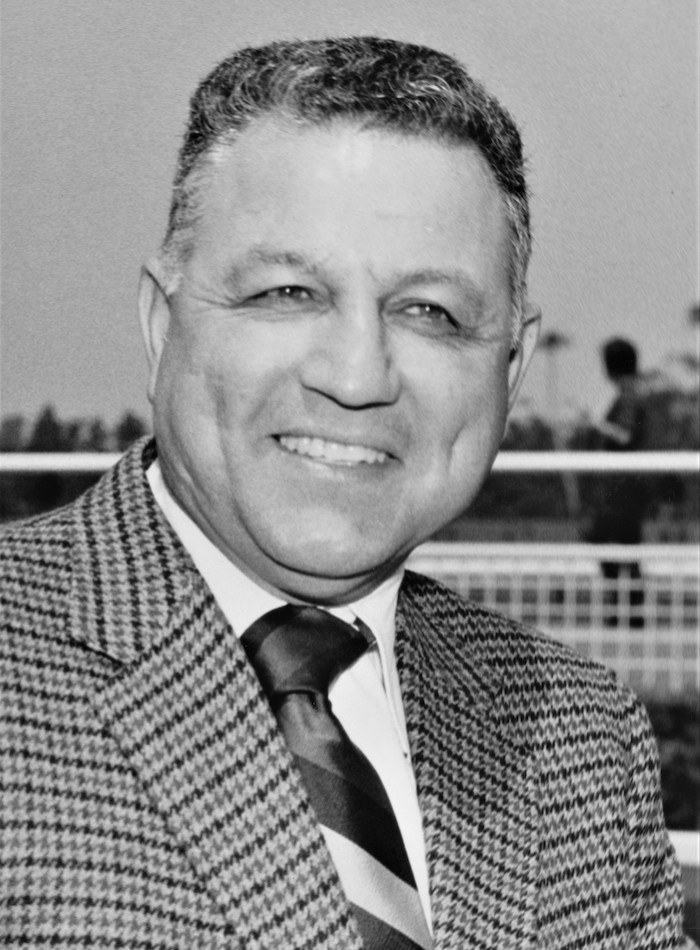 “In 1940, Enredada’s daughter Niza was born, the first Chilean of that branch,” Sepulveda wrote. “Her granddaughter Noris, born in 1958, years later would be the mother of the champion Tizna.
“In 1940, Enredada’s daughter Niza was born, the first Chilean of that branch,” Sepulveda wrote. “Her granddaughter Noris, born in 1958, years later would be the mother of the champion Tizna.
“Henry Moreno was a close friend of our multiple champion trainer in Chile, Don Juan Cavieres Acevedo,” Sepulveda continued. “She was prepared by Don Pedro Bagú and later the successful trainer, Don Guillermo Peralta, to win the classic Premio Panamá and Premio Estados Unidos del Brasil at the Hipodromo Chile.”
Fernando Diaz-Valdes, part of the Don Alberto Stable operation in the US, vividly recalls the high regard with which Tizna was held in his native Chile.
“Fernando Fantini, the famous bloodstock agent, bought her for a client and was instrumental in sending her to Henry Moreno in California,” said Diaz-Valdes. “We followed her career closely and were very proud of what she accomplished.”
The return was immediate for Fantini and Victor Zemborain, who raced as the Nile Corp., when Tizna won a pair of graded stakes in early 1973 and two more in 1974. It was her 1975 campaign, however, that exposed her as one of the very best in the older female division.
Big guy came out firing
To set the scene, recall that 1975 dawned with Forego astride the racing landscape as the reigning Horse of the Year. The big guy came out firing with a victory in the Seminole Handicap at Hialeah Park under 129 pounds on Feb. 1, then came right back two weeks later to take the Widener Handicap at Hialeah under 131. Point made.
Out west, my gals were warming into the season. On Jan. 1, Tizna finished third in the six-furlong Las Flores Handicap at Santa Anita Park and was moved up to second on a DQ. On Jan. 18, Susan’s Girl, making her 47th start for breeder-owner Fred Hooper, was beaten half a length in the Santa Monica Handicap while giving 10 pounds to the winner, Sister Fleet. (The date lives in infamy. Earlier on the Jan. 18 program Alvaro Pineda, a former Santa Anita riding champ, was killed in the starting gate when his horse reared and crushed the jockey’s skull. He was 29.)
Tizna and Susan’s Girl commenced their 1975 rivalry in the Santa Maria Handicap on Feb. 16, but they both were upstaged by Gay Style, a daughter of Sir Gaylord who had mixed it up with Dahlia and Allez France in Europe before joining Charlie Whittingham in California. Tizna was second by three-quarters of a length, with Susan’s Girl a length and a quarter back in third.
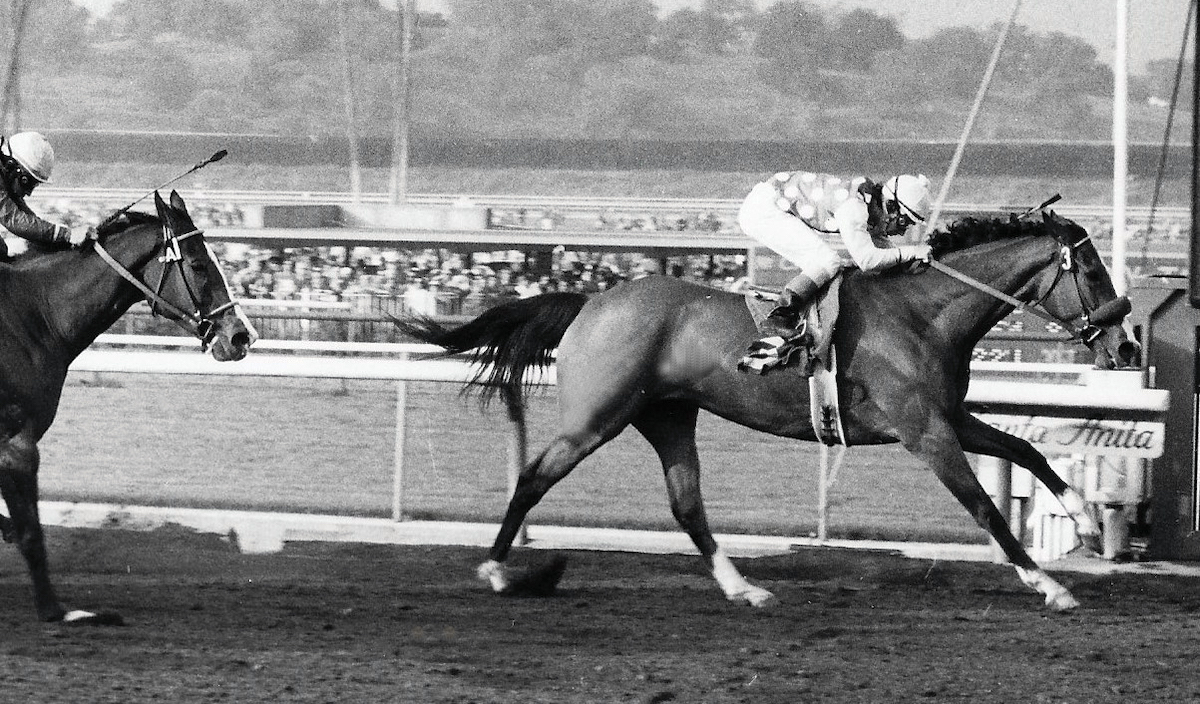 The entire female division was on call for the Santa Margarita Invitational Handicap on March 1 at a mile and one-eighth. Tizna had won the race the year before in a thriller over Penny Flight, a daughter of Damascus trained by David Whiteley, at odds of 7-1. She was 11-1 in her defense of the crown, tribute to a field that included not only Susan’s Girl, Gay Style, Sister Fleet, and Penny Flight, but also champion filly Chris Evert, Alabama Stakes winner Quaze Quilt, and La Zanzara, the Irish mare who would go on to defeat males in the San Juan Capistrano.
The entire female division was on call for the Santa Margarita Invitational Handicap on March 1 at a mile and one-eighth. Tizna had won the race the year before in a thriller over Penny Flight, a daughter of Damascus trained by David Whiteley, at odds of 7-1. She was 11-1 in her defense of the crown, tribute to a field that included not only Susan’s Girl, Gay Style, Sister Fleet, and Penny Flight, but also champion filly Chris Evert, Alabama Stakes winner Quaze Quilt, and La Zanzara, the Irish mare who would go on to defeat males in the San Juan Capistrano.
Tizna was unfazed by the competition. Under Don Pierce, she took advantage of a ground-saving ride to burst through inside the quarter pole, sweep past Susan’s Girl, and win by a length and a half. Only two other mares had won the Santa Margarita twice since its first running in 1935.
With Tizna up 2-0, my two heartthrobs met next in the Long Beach Handicap on April 26, at nine furlongs on the Hollywood Park grass. Moreno already had watched his mare win the 1974 Ramona Handicap on the turf at Del Mar, but Susan’s Girl had not raced on the grass in nearly two years. It did not matter. Susan’s Girl won the Long Beach by a measured half, with Tizna trailing in fourth.
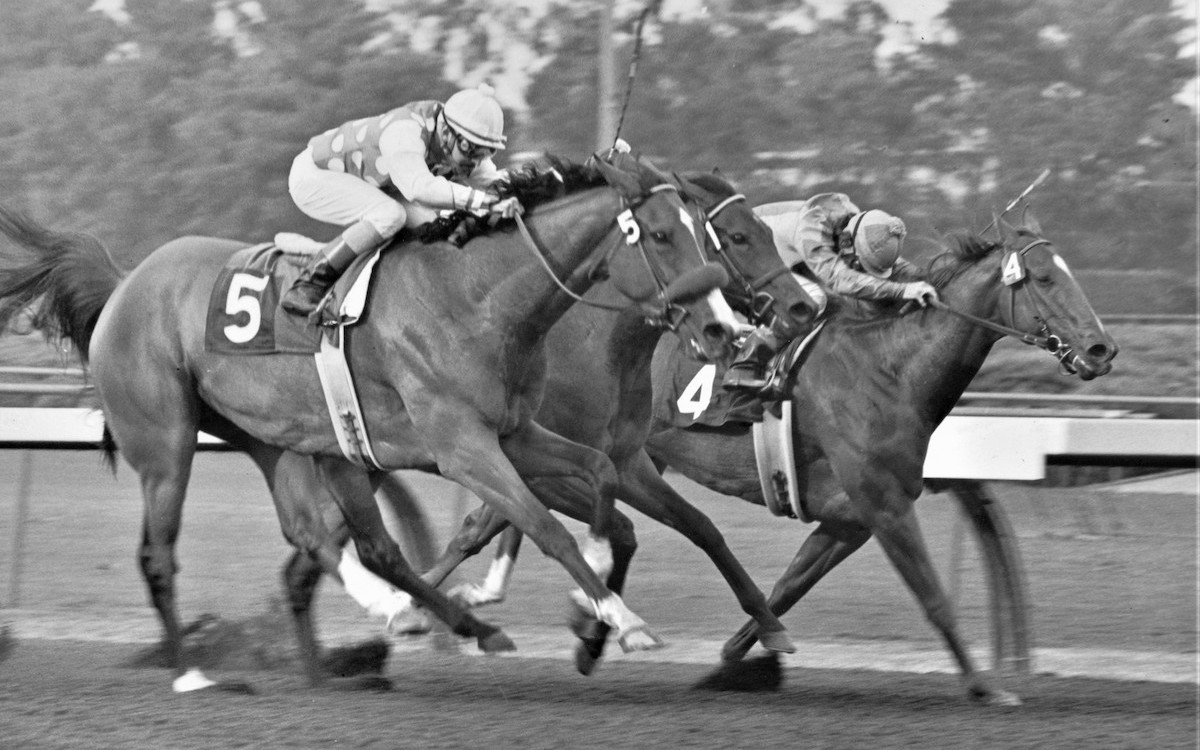 Clearly, the West Coast waters were deep. In the subsequent Milady Handicap, at a mile and a sixteenth on dirt, the speedy Modus Vivendi stretched her proven class to defeat Tizna by three-quarters of a length. This time Susan’s Girl had to settle for fourth. Then came the Wilshire Handicap on June 22 and a rematch at a mile and one-eighth on the Hollywood turf. In a taste of their encounters to come, saddled with the same weight, Tizna and Jerry Lambert edged Susan’s Girl and Laffit Pincay by an agonizing head.
Clearly, the West Coast waters were deep. In the subsequent Milady Handicap, at a mile and a sixteenth on dirt, the speedy Modus Vivendi stretched her proven class to defeat Tizna by three-quarters of a length. This time Susan’s Girl had to settle for fourth. Then came the Wilshire Handicap on June 22 and a rematch at a mile and one-eighth on the Hollywood turf. In a taste of their encounters to come, saddled with the same weight, Tizna and Jerry Lambert edged Susan’s Girl and Laffit Pincay by an agonizing head.
The Vanity Handicap on July 6 figured to settle the West Coast chapter of the rivalry. For the first time, Tizna was giving weight to Susan’s Girl, 125-123, and that is how the race unfolded, with those two running one-two with less than a furlong to run.
Argentina beats Chile
Then along came the Argentine mare Dulcia, trained specifically for the purpose by Whittingham and ridden by Bill Shoemaker, to finish with a rush and defeat Susan’s Girl by three-quarters of a length. Tizna was fourth, lapped on third-place La Zanzara.
History will note that Moreno lodged a trainer’s claim of foul against the winner, contending she crossed over on Tizna without sufficient clearance. The protest was not allowed, but even if the stewards had found Dulcia guilty of interference, the decision would not have made a ripple of news.
By the time the Vanity was declared official, the sports world was in shock over the breakdown of the undefeated filly Ruffian in her Belmont Park match race that day against Kentucky Derby winner Foolish Pleasure. With the announcement of Ruffian’s death the following morning, a pall descended over the game that required all players to take a deep breath.
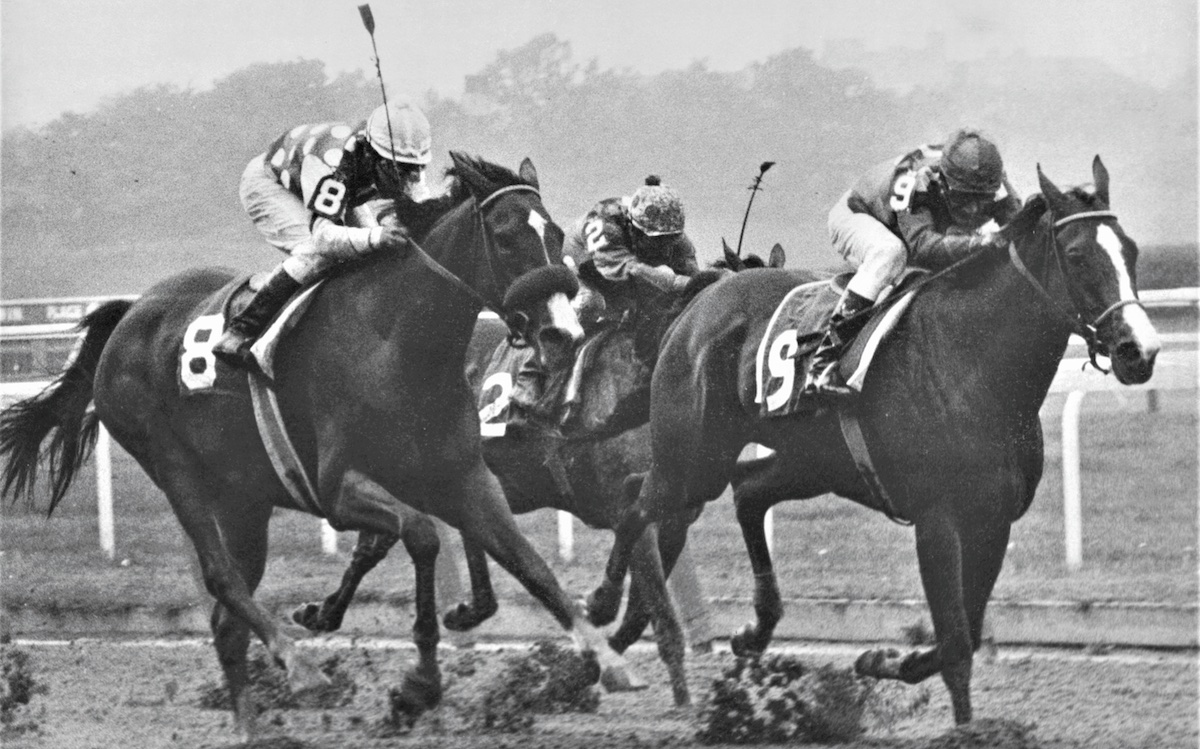 Tizna and Susan’s Girl did not meet again until Sept. 20 in the Beldame Stakes at Belmont Park. Pincay had been bounced from Susan’s Girl to land squarely on Tizna for the nine furlongs around one vast turn, and the weights were dead level. Pincay sat just off the pace set by Susan’s Girl and Braulio Baeza then attacked in the stretch, but the champion was tenacious, and the verdict was a neck. This time, it was Tizna’s rider claiming foul, Pincay accusing Baeza of bearing out. In their wisdom, the usually strict New York stewards saw no reason to change the order of finish.
Tizna and Susan’s Girl did not meet again until Sept. 20 in the Beldame Stakes at Belmont Park. Pincay had been bounced from Susan’s Girl to land squarely on Tizna for the nine furlongs around one vast turn, and the weights were dead level. Pincay sat just off the pace set by Susan’s Girl and Braulio Baeza then attacked in the stretch, but the champion was tenacious, and the verdict was a neck. This time, it was Tizna’s rider claiming foul, Pincay accusing Baeza of bearing out. In their wisdom, the usually strict New York stewards saw no reason to change the order of finish.
Moreno was not finished, though, and neither was Hooper. Their mares were durable and plainly in good form. After the Beldame, Susan’s Girl headed to Keeneland, where she sauntered once around the nine-furlong course to win the Spinster Stakes by a carefully measured half-length.
Star-spangled field
For her part, Tizna returned to California to be part of a star-spangled field competing in the $350,000 National Thoroughbred Championship on Nov. 1. Ambitious in both name and purse endowment, the NTC tried to draw the best horses in competition from far and wide, and it did manage to lure Europe’s Allez France for what amounted to a ceremonial farewell race on dirt.
The real catch would have been Forego, but one of his bad ankles flared, and he was packed away for the season, leaving Ancient Title and Pincay the favorites for the mile-and-a-quarter test against domestic invaders Holding Pattern, Royal Glint, Stonewalk, and L’Enjoleur.
Frustrated by the game of musical saddles, Moreno called upon his old compadre Fernando Alvarez, a veteran of 38 whose high-pressure pedigree included victories in the Santa Anita Handicap, Santa Anita Derby, and Jockey Club Gold Cup. As an added bonus, Alvarez was a native of Santiago, Chile. In the running, Tizna may have been farther back early than she preferred, but she came with a charge at the end to finish third behind Dulcia, the Vanity winner, and Royal Glint, who was good enough to win the Santa Anita Handicap four months later.
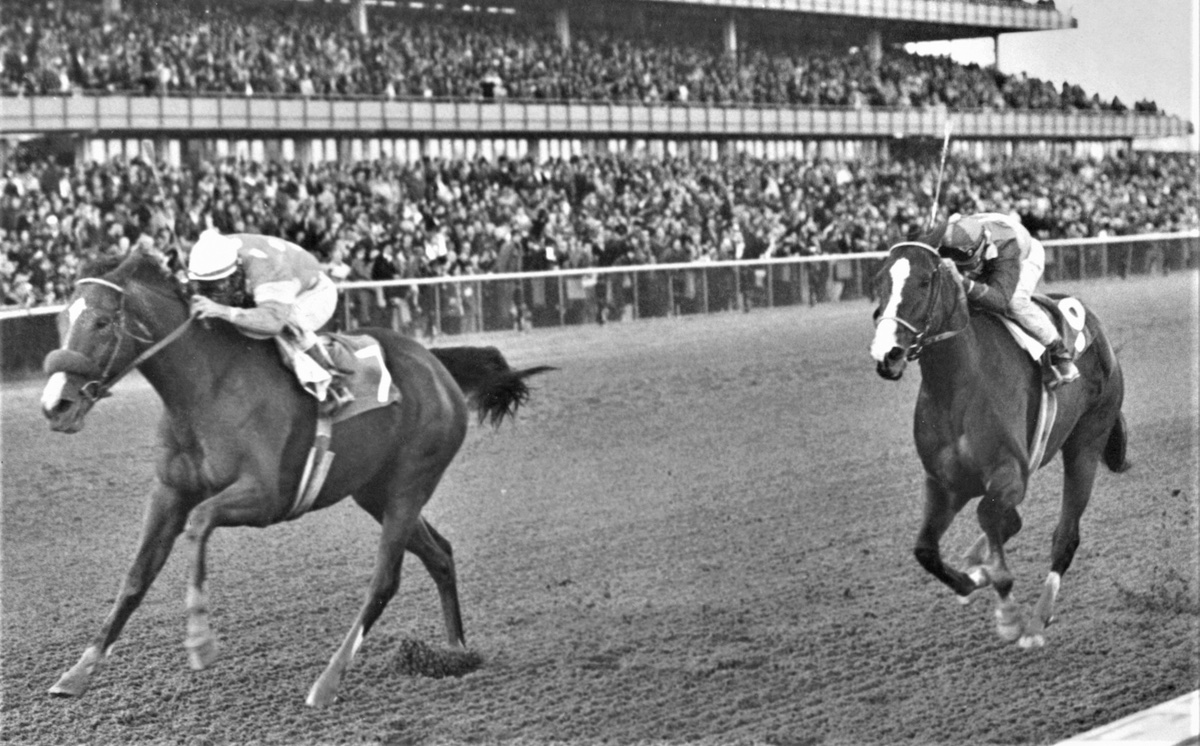 Undaunted, Moreno was convinced that if he could beat Susan’s Girl once more, the title for best older mare would go to Tizna. The Ladies Handicap at Aqueduct, on Nov. 15 at a mile and a quarter, was the final major race for the division. First run in 1868, its history was replete with the names of great mares – Firenze, Beldame, Maskette, Miss Woodford, Top Flight, Straight Deal, Shuvee – all of them elevated to the Hall of Fame.
Undaunted, Moreno was convinced that if he could beat Susan’s Girl once more, the title for best older mare would go to Tizna. The Ladies Handicap at Aqueduct, on Nov. 15 at a mile and a quarter, was the final major race for the division. First run in 1868, its history was replete with the names of great mares – Firenze, Beldame, Maskette, Miss Woodford, Top Flight, Straight Deal, Shuvee – all of them elevated to the Hall of Fame.
Pass A Glance, second to Susan’s Girl in the Delaware Handicap, set a slow pace over the dry, tiring Aqueduct dirt, with Susan’s Girl not far behind. Once again, Alvarez took his time with Tizna, but after the field had run a mile, the Chileans were poised to strike at the top of the stretch. The slow pace emboldened the leaders, leaving the final eighth of a mile a pitched battle. At the end it was Tizna, on the outside, by a neck over Pass A Glance, with Susan’s Girl another neck back in third.
Or, as her named was spelled on first mention in the next day’s New York Times, ‘Tizma’. The headline atop the Ladies race report read, “Susan’s Girl Is Third at Aqueduct,” and that’s the way Steve Cady tilted the piece, as if it would not have been news otherwise. Such an East Coast slant was not unusual in those days. When a horse from California came to town, it was usually treated as an inferior creature from another planet.
Despite holding a 5-3 advantage in head-to-head encounters during the year, Tizna was dismissed in the Eclipse Award vote that went, for the third time, to Susan’s Girl. The Daily Racing Form Free Handicap, compiled by the respected racing secretary Kenny Noe, Jr., codified the Eclipse voting with Susan’s Girl pegged at 126 pounds, and Tizna listed at 125 alongside Dulcia.
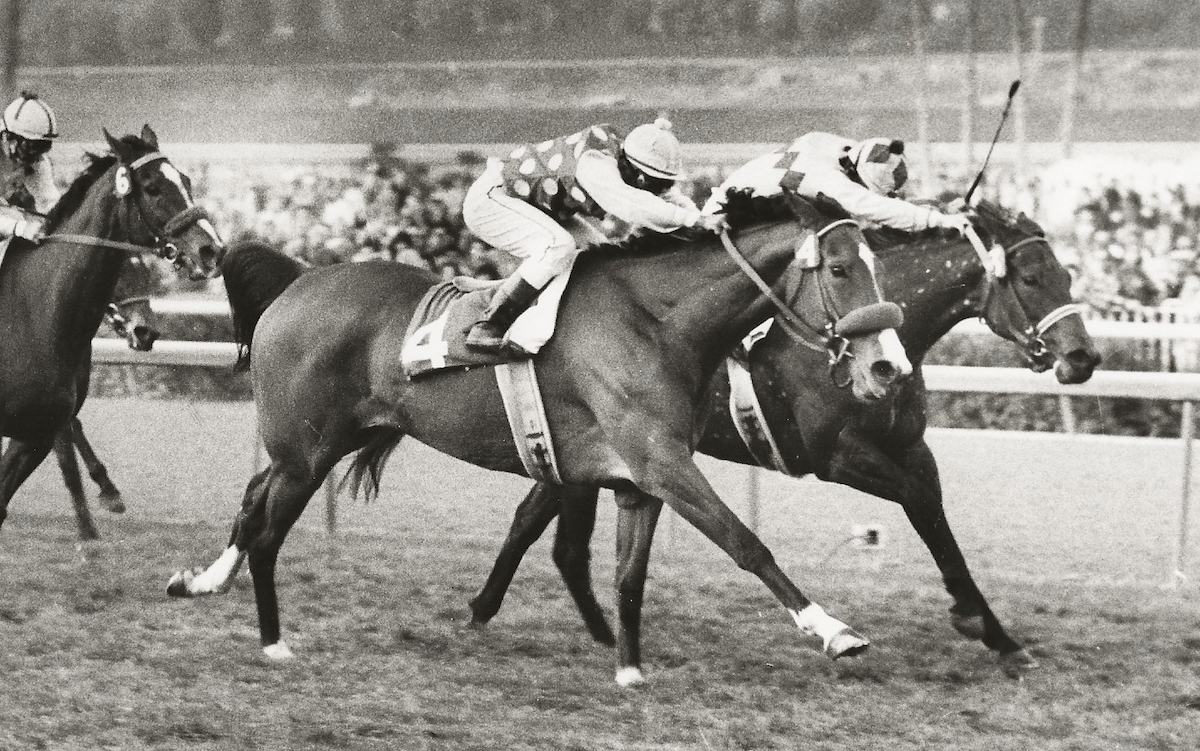 Susan’s Girl retired, but Tizna stayed in training. And even though she began 1976 by carrying 132 pounds to victory in the San Gorgonio Handicap, at nine furlongs on Santa Anita’s turf, she was not at her best. After several placings and a couple of flops, Tizna was retired in mid-season. She had done more than enough.
Susan’s Girl retired, but Tizna stayed in training. And even though she began 1976 by carrying 132 pounds to victory in the San Gorgonio Handicap, at nine furlongs on Santa Anita’s turf, she was not at her best. After several placings and a couple of flops, Tizna was retired in mid-season. She had done more than enough.
Moreno went on to embellish his reputation with South American mares like Re Toss and Bastonera, along with the Irish mare Sangue and major stakes winners Sam Who, Lite Light, and Timely Assertion. The trainer died in 2020 at the age of 90.
Given every chance
As for Tizna, she remains a national hero to this day in Chile, and not only because she was the first Chilean mare to make a racing impact beyond the borders of her native land. She spent her broodmare career at Overbrook Farm in Kentucky and was given every chance, mated to Northern Dancer, Secretariat, and Mr. Prospector, among others. None o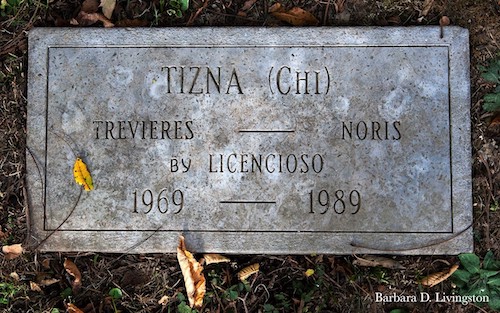 f her seven foals accomplished much. However, through the miracle of delayed validation, Tizna’s foal of 1981, a daughter of Lyphard, made all the difference. Her name was Tizly.
f her seven foals accomplished much. However, through the miracle of delayed validation, Tizna’s foal of 1981, a daughter of Lyphard, made all the difference. Her name was Tizly.
After a few US foals, Tizly was sold to Japanese interests. Her first foal in Japan, Otome Gokoro, produced the filly Sugar Heart in 2005, who in turn gave birth in 2012 to Kitasan Black, the two-time Japanese Horse of the Year.
Before she left for Japan, Tizly produced the colt Cee’s Tizzy in 1987, to the cover of Relaunch. The racing career of Cee’s Tizzy, named for owner Cecelia Straub-Rubens, ended after three wins and a G1 placing in six starts for trainer John Russell. But that was enough to earn a chance at stud.
The best sons and daughters of Cee’s Tizzy turned out to be more than useful. Budroyale finished second in a Breeders’ Cup Classic and earned more than $2 million. Gourmet Girl was champion older female of 2001. Cost Of Freedom was a G1 sprinter. At least 30 offspring of Cee’s Tizzy won more than $200,000 racing in the US.
Above all, the stallion Cee’s Tizzy, a grandson of the remarkable Chilean mare Tizna, left an indelible imprint as the sire of Tiznow, 2000 Horse of the Year and 3-year-old male champion, 2001 older male champion, two-time winner of the Breeders’ Cup Classic, Hall of Famer, and exemplary sire of such stone-cold runners as Well Armed, Tourist, Colonel John, Midnight Bourbon, and Tough Tiz’s Sis.
So the message is simple, and everlasting: No Tizna, no Tiznow.
• Read all Jay Hovdey's features in his Favorite Racehorses series
Special feature: Where the turf meets the surf – but just what makes Del Mar so great?
Special feature: America’s favorite racetrack – but just what is it that makes Saratoga so great?
Sister Dot: the Secretariat mare who outdid herself by producing a champion
View the latest TRC Global Rankings for horses / jockeys / trainers / sires


